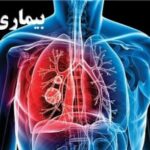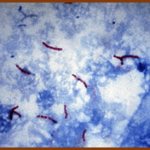Tuberculosis and its diagnosis methods
Introduction
Tuberculosis is one of the most common diseases in world that many people in the world suffer from this disease and medical science has been able to identify and produce special drugs to improve these patients. Certainly, this disease, like other diseases, will require a variety of laboratory diagnostic methods to diagnose the cause of tuberculosis along with different types of diagnostic methods, so that they can be treated after a correct and timely diagnosis. In this article, we intend to introduce the fast acid bacterium Mycobacterium tuberculosis and describe the various methods of laboratory diagnosis of tuberculosis.

What causes tuberculosis?
All diseases have a cause or a causative agent, in which case the person has become ill according to the above. When an external agent such as bacteria, virus, etc. enters the body, the body will subconsciously begin to defend the body against that external agent, in which case antibodies or antibodies are produced. Tuberculosis is caused by its agent, the bacterium Mycobacterium tuberculosis (MTB). The binding receptors of this bacterium are located in the respiratory system and in the lungs, so it attacks the lungs or the lungs and attacks it. This bacterium is an aerobic bacillus and has a tubular shape under a microscope.
Types of tuberculosis
Despite the discovery of highly effective vaccines and drugs to treat tuberculosis, one-third of the world’s population and 50 percent of immigrants are now infected with the tuberculosis bacillus. It is estimated that one person in the world is infected with tuberculosis every 4 seconds and one person dies of tuberculosis in the world With this routine, in a decade, nearly 300 million people become infected with the tuberculosis germ.
Sometimes this disease agent may be present in the body but not present, which is called a latent disease, but sometimes the disease may occur and the symptoms may be recognizable.
When a person develops overt tuberculosis, he or she will also experience symptoms such as high fever and chills, frequent and severe coughs, night sweats and sleep deprivation, and unexplained and severe weight loss. Keep in mind that latent tuberculosis has no symptoms and may even infect others through breathing and airborne transmission. It is better to see a doctor as soon as possible in case of any symptoms for diagnosis and treatment and to try to diagnose yourself by several tests.
Various methods of laboratory diagnosis of tuberculosis
In order for your doctor to tell you definitively that you have tuberculosis, he or she must review the results of your various tests and then document the treatment. Among the various methods of laboratory diagnosis of tuberculosis, we can mention the following:
Tuberculin skin test (PPD):
In this test, also known as the TST test, a special syringe is used to deliver PPD tuberculin peptide under the skin, usually to the forearm. If it is normal to have a small, faint lump when injected, keep in mind that this is different from injecting a vaccine. After a few days, a lab colleague or doctor will examine your skin. If the test site is swollen, firm, and prominent, it will measure it with a ruler, and the TST result, which depends on the size of the red swelling at the injection site. Is being reported. After performing this test for tuberculosis and it’s positive, you should do other tests to determine whether it is hidden or obvious.
Molecular detection method (PCR):
PCR test or polymerase chain reaction can be considered as one of the most important and basic methods for diagnosing this disease due to the short time for diagnosis and response to the test result. PCR is a method that by taking a trace of DNA in bacteria and observing the desired genetic sequence in the bacterium that causes tuberculosis, we can find out that the test result is positive. In the same way, it can be stated whether bacteria are present in a person’s body or not, because sometimes bacteria may be present in the body but have no activity, and therefore will remain hidden in the body and show no symptoms. Also does not update. In this case, with the PCR method, we can find out the presence or absence of this disease, ie tuberculosis.
Interferon-gamma method (IGRA):
This test is usually done on the blood of people suspected of having tuberculosis. This test measures the immune system’s response to a bacterial attack and the cause of tuberculosis. In other words, the amount of antibodies present and the antibodies secreted will indicate whether this test is positive or negative. The amount of antibody present and its size in the body should normally be a definite amount. When the disease agent enters the body, the body will begin to produce antibodies and secrete antibodies against that agent, in which case two classes of antibodies are attacked and memory is created. Attack antibodies can be measured this way. By measuring this substance in the body, we can act for treatment.
Direct smear examination of sputum and its culture:
By direct smear preparation of sampled sputum and culturing them and finally fast acid staining (Zil Neelsen-Ziehl method) or acid decolorization resistance method and observation under a microscope can be the presence of this disease agent. Tuberculosis. In this method, first, a sputum sample is taken from a person suspected of having the disease and placed in a special culture medium with appropriate temperature and conditions for a specified period of time. After the specified time, if the bacteria grow in the culture medium, it means that the test result is positive and the person will have tuberculosis. This test is usually a preliminary test and you will have to spend a long time answering the test.
TB-Fluorochrome staining:
This method is one of the most popular methods in the world in the diagnosis of tuberculosis bacilli and using the fluorochrome method, mycobacteria are detected in the form of light fluorescent rods against a darker background. Fluorochrome staining is more sensitive and takes less time to examine the smear than Kinyoun or ZN staining because the smears can be examined at a lower magnification.
AmirPayavand Research & Development Company is one of the leading companies in the field of production of laboratory diagnostic reference kits, currently producing and presenting this product (TB-Fluorochrome Stain Kit) with the AP-RAD brand in the domestic market. Click here for more information.
Medical diagnostic laboratories According to these cases, you can diagnose existing tuberculosis and treat your patient. Payvand Clinical and Specialty laboratory by using the latest techniques, kits, and definition of diagnostic panels on a variety of samples in the field of immunosurgery and molecular is recognized as one of the referral centers in the diagnosis of tuberculosis in the country.
23 October National TB Day
This day, 23 October, has been named the National Day against Tuberculosis i IRAN. So that with the cooperation of each other and with the help of the sympathetic community, we can better treat these patients and increase their morale to TB patients, and lead them to a happier and more hopeful life. In this article, information about tuberculosis and various methods of laboratory diagnosis of tuberculosis was provided to you with the hope of recovery of loved ones who are affected by this disease.





